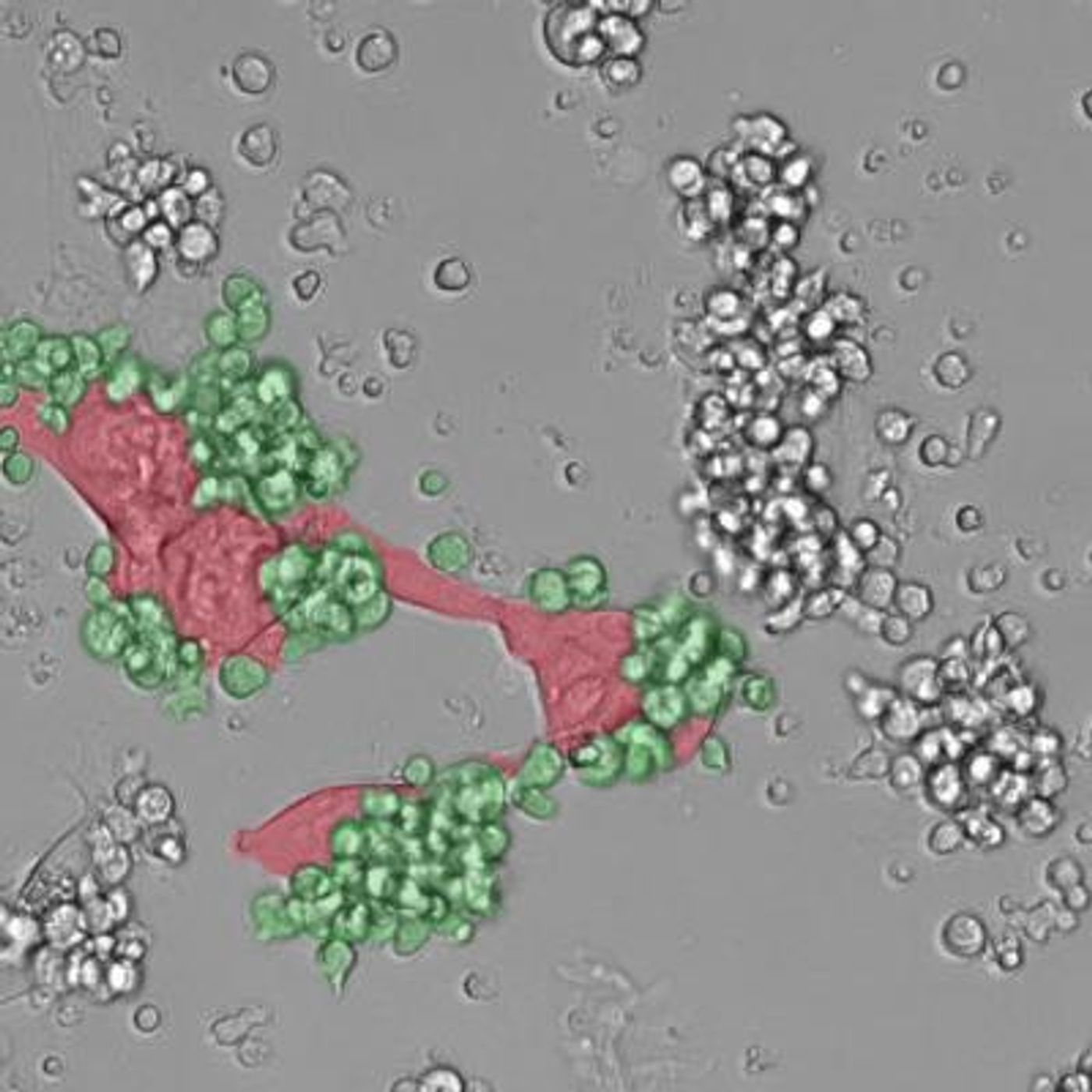When you think about how cancer cells continue to develop ways to grow and spread despite both the body’s and medicine’s best efforts, it’s almost as if they have a mind of their own. A new study from
Ecole Polytechnique Federale De Lausanne (EPFL), a university in Switzerland, shows how a team of researchers are overcoming one of cancer’s mechanisms for metastasis to benefit a wide variety of people fighting cancer.
Macrophages are specialized immune cells descended from monocytes, and they destroy pathogenic and abnormal cells by engulfing them and breaking them into pieces. In some cases, cancer cells not only disable macrophages from engulfing other cancer cells, but they also turn around and recruit the body’s own macrophages to do their dirty work.
These “hijacked” immune cells are called tumor-associated macrophages (TAMs), and the research team from EPFL set out at the beginning of the study with the goal of bringing TAMs back from the dark side.
Natural, unaltered macrophages are modified by a small genetic molecule called microRNA (miRNA). In addition to warding off cancer cells, miRNAs guide macrophages to help repair the body during infection or other damage. When a macrophage is converted into a TAM, though, their miRNA control also changes to serve cancer-related purposes.
Previous studies showed that TAM miRNAs help the cancer cells stay hidden from the host immune system so they have time and resources to grow and spread to other body tissues. Whatever the reason for metastasis in any time of cancer, it’s an impending sign of a poor prognosis.
In attempt to resolve the issue, the researchers from EPFL genetically altered TAMs so they could no longer produce miRNAs. Without these molecular regulators, TAMs could not shield the growing tumor from the immune system, and the host was able to continue recognizing and attacking the cancer cells like normal. Even more, without miRNA to guide the TAMs, these hijacked macrophages actually released signals to the immune system, warning the host cells of a growing tumor.
The researchers identified a specific group of miRNAs that appeared to be causing the most trouble in TAMs: Let-7. While blocking the production of Let-7 miRNA successfully reversed the cancer-hiding effect, researchers are still unsure how to block Let-7 activity in TAMs and not in other macrophages, who still need miRNAs to function, that could be helping the immune system fight cancer.
The group from EPFL is currently working on this problem, though. Additionally, they discovered that blocking Let-7 in TAMs prevents further metastasis, which could improve prognoses for many cancer patients. Most excitingly, Michele De Palma, the team’s leader, says is that “TAM reprogramming greatly improved the efficacy of immunotherapy.”
With the impending ability to selectively block Let-7 in TAMs, De Palma and the team from EPFL could be on the verge on a brand new therapeutic strategy for boosting the immune system to fight cancer and prevent metastasis.
Their study was recently published in the journal
Nature Cell Biology.
Sources:
Ecole Polytechnique Federale De Lausanne,
Nature Reviews Immunology









